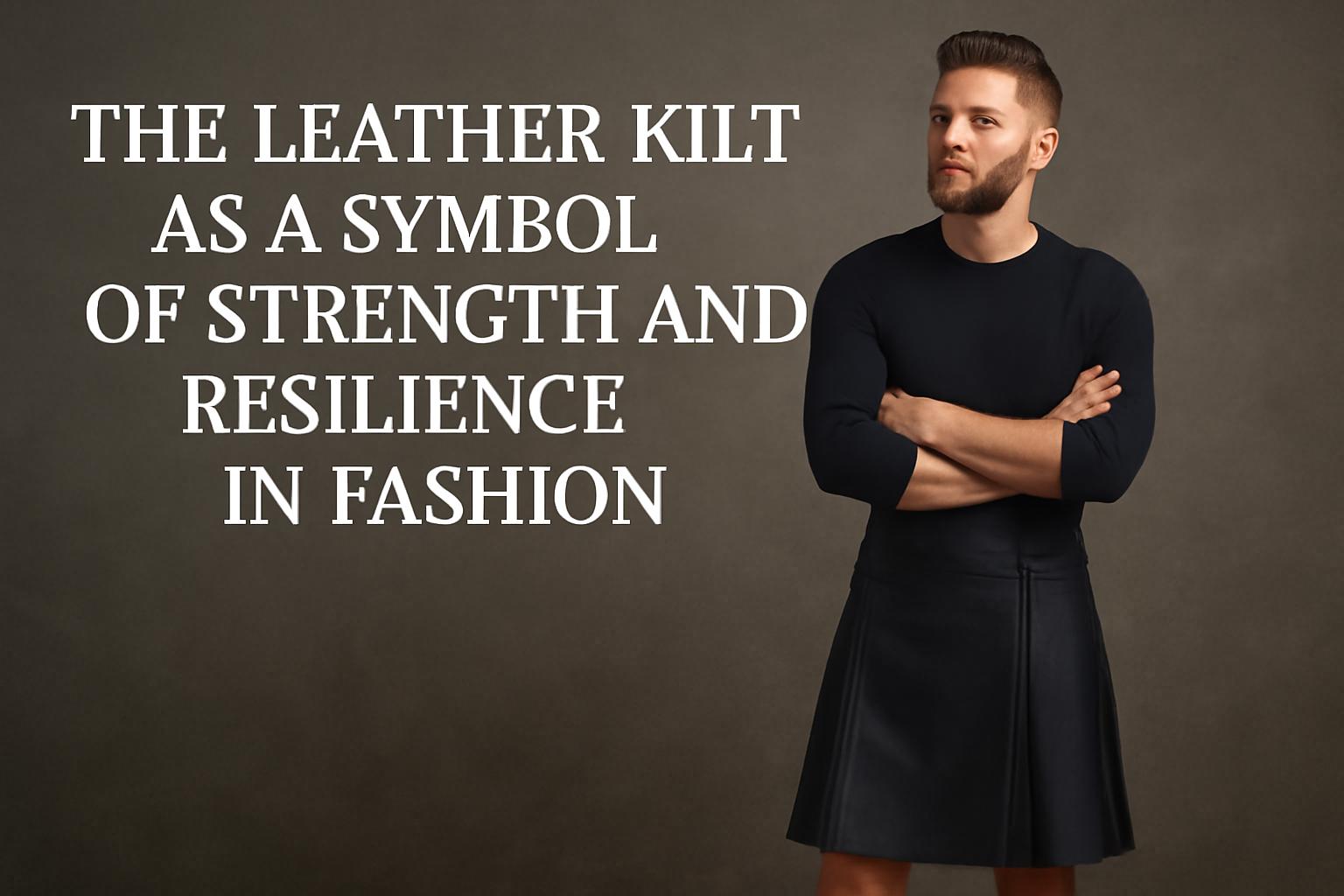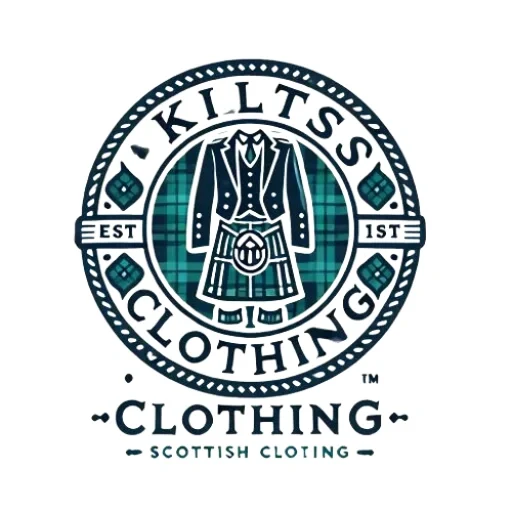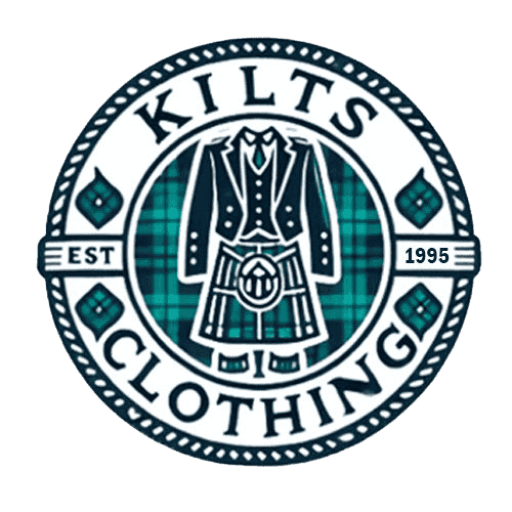The Leather Kilt as a Symbol of Strength and Resilience in Fashion

Fashion is an expression of individuality and power, and one of the most striking examples of this is the leather kilt. This iconic garment, rooted in Celtic tradition, has evolved from its humble beginnings into a modern fashion statement of strength, resilience, and empowerment. Worn initially for practical reasons in the Scottish Highlands, kilts have since become symbols of cultural pride and identity. In recent decades, the leather kilt has taken on an even more powerful role, representing a bold statement of defiance, independence, and modern masculinity and femininity.
The leather kilt is no longer just a historical garment—it's a fashion symbol, worn by those who value resilience and strength. This article will explore how the leather kilt has come to represent more than just style, embodying qualities of empowerment, endurance, and rebellion that resonate in today's fast-paced world.
1. The History of the Kilt and Its Symbolism
Kilt Origins: More Than Just a Garment
The kilt's history goes back centuries to the Scottish Highlands, where Scottish men wore it as a practical garment. Originally made from wool, kilts were designed to protect the wearer from the harsh climates of the Highlands. They provided warmth and mobility, essential for those living in the rugged landscape.
But the kilt was more than just a functional garment; it became a powerful symbol of identity and strength. The tartan patterns woven into the wool fabric represented the wearer's clan or family, and kilts were often worn during significant cultural or national events. It was a garment that unified people, a symbol of pride, courage, and heritage.
The Kilt as a Symbol of Pride and Rebellion
In the 18th century, following the Jacobite Rebellions, the kilt emerged as a symbol of defiance and resistance. To suppress Scottish culture, the British banned the wearing of kilts, but the Scots refused to comply, continuing to wear them as an act of rebellion. Over time, the kilt became an emblem of national pride and resilience, representing not only cultural heritage but also the fight against oppression.
Over time, the kilt grew to embody strength and resilience, not just in Scotland but also across other parts of the Celtic world. The kilt became synonymous with the fighting spirit of the Scots and their ability to endure difficult circumstances.
2. The Evolution of the Leather Kilt
The Transformation from Wool to Leather
While the traditional woolen kilt has remained a cornerstone of Scottish heritage, the introduction of the leather kilt marked a significant shift. In the 20th century, designers began experimenting with the kilt's traditional design, opting for leather as a material that would add a contemporary edge. Leather kilts are more durable and versatile than their wool counterparts, allowing for easier maintenance and a more modern aesthetic.
The leather kilt was not just a stylistic choice but a bold evolution that reflected the changing dynamics of fashion. Leather, known for its strength, durability, and toughness, naturally became associated with qualities of resilience. It added a layer of rebellion, allowing individuals to make a stronger fashion statement that was rooted in both tradition and modernity.
Leather Kilt in Modern Fashion: A Bold Statement
The leather kilt began to gain traction in subcultures such as punk, rock, and goth, where it became a symbol of individuality, defiance, and non-conformity. These subcultures appreciated the rebellious nature of the leather kilt, as it broke away from the traditional wool kilt and embraced modern, edgy aesthetics.
As fashion evolved, so did the leather kilt's role in mainstream culture. No longer confined to specific subcultures, leather kilts began to appear on runways, in fashion shows, and streetwear. The leather kilt became a statement piece, representing resilience, strength, and the courage to be different.
3. The Symbolism of Leather Kilts in Today's Fashion
Leather Kilts as a Symbol of Empowerment
In today's fashion landscape, the leather kilt has become a symbol of empowerment for individuals who embrace its boldness. Unlike other garments that conform to traditional gender roles, the leather kilt has become an emblem of freedom and self-expression.
Wearing a leather kilt is not simply about style—it is about making a statement. Whether worn by men, women, or non-binary individuals, the leather kilt serves as an assertion of independence, confidence, and self-assurance. It allows the wearer to show the world that they are strong and resilient, unafraid to break free from societal norms and expectations.
Strength, Resilience, and Identity
The leather kilt is more than just a piece of clothing—it's a representation of identity. For many, it serves as a symbol of inner strength, endurance, and the ability to face life's challenges with confidence. Much like the historical significance of the woolen kilt, the leather kilt is a garment that speaks to a person's ability to overcome adversity and adapt to changing times.
In a world that constantly challenges individuals to prove their worth, the leather kilt serves as a reminder of the power that lies within each of us—the ability to stand tall, embrace change, and persevere through difficult times.
4. Leather Kilts in Pop Culture and Their Growing Popularity
Leather Kilts on the Big Screen and Runways
The leather kilt has made appearances in movies, television shows, and fashion runways, reinforcing its symbolism of strength and resilience. From films featuring warriors to the fashion-forward runways of high-end designers, the leather kilt continues to play an important role in pop culture.
Icons in the punk rock scene, musicians, and actors have popularized the leather kilt, cementing its status as a cultural symbol. The connection between punk rock and leather kilts is powerful, as both represent rebellion, individuality, and the courage to challenge the status quo.
The Cultural Relevance of Leather Kilts Today
The leather kilt is no longer a niche garment—it has become widely recognized in mainstream fashion as a symbol of defiance and resilience. Worn by individuals from all walks of life, the leather kilt transcends cultural boundaries, offering a versatile, bold style that communicates strength and personal empowerment.
Whether at music festivals, art shows, or high-end fashion events, the leather kilt remains relevant as a representation of modern resilience. It continues to break free from traditional fashion boundaries, signaling that strength and style can coexist.
5. How to Style a Leather Kilt for Maximum Impact
Styling Tips for Everyday Wear
One of the key advantages of the leather kilt is its versatility. It can be styled for a range of occasions, from casual outings to formal events. For a casual look, pair a leather kilt with a simple t-shirt, leather jacket, and combat boots. This combination exudes an effortlessly cool vibe, with the kilt acting as the focal point of the outfit.
Dressing for Formal or Special Occasions
The leather kilt can also be dressed up for more formal settings. For instance, you can wear a leather kilt with a tailored blazer, button-up shirt, and elegant shoes for a refined yet edgy look. The leather kilt makes a bold statement at events like weddings, galas, or music festivals, where strength and resilience are celebrated.
6. Why Leather Kilts Are a Lasting Fashion Trend
Durability and Timeless Appeal
One of the most appealing aspects of the leather kilt is its durability. Unlike many fashion trends that come and go, leather is a material that stands the test of time. Leather kilts age beautifully, gaining a unique patina that makes them even more striking. This longevity speaks to the resilience of both the material and the wearer, reinforcing the kilt's place in fashion as a symbol of enduring strength.
The Symbol of Endurance in Fashion Trends
The leather kilt has proven itself to be more than just a passing trend. As fashion continues to evolve, the leather kilt has become a lasting symbol of strength, resilience, and rebellion. Its ability to adapt to contemporary tastes while maintaining its cultural significance ensures that it remains relevant for generations to come.
Conclusion
The leather kilt is more than just a garment—it's a powerful symbol of strength and resilience in the ever-changing world of fashion. With roots in Celtic heritage and a strong presence in modern subcultures, the leather kilt embodies the courage to embrace individuality and break free from societal norms. Whether worn as a statement of pride, rebellion, or empowerment, the leather kilt continues to inspire those who dare to make a bold fashion choice. Embrace the strength and resilience of the leather kilt in your wardrobe today.
FAQ Section
Q1: What makes leather kilts different from traditional wool kilts?
Leather kilts are made from durable leather, offering a modern, edgy look compared to the traditional woolen tartan kilts, which are often worn for formal or ceremonial events.
Q2: Can women wear leather kilts?
Yes! Leather kilts are increasingly popular among women, allowing them to make bold fashion statements while embracing the strength and resilience the kilt represents.
Q3: How do I care for my leather kilt?
Leather kilts require proper care to maintain their appearance. Regular cleaning, conditioning, and storing away from direct sunlight will keep the leather in good shape.
 $ USD
$ USD € EUR
€ EUR

